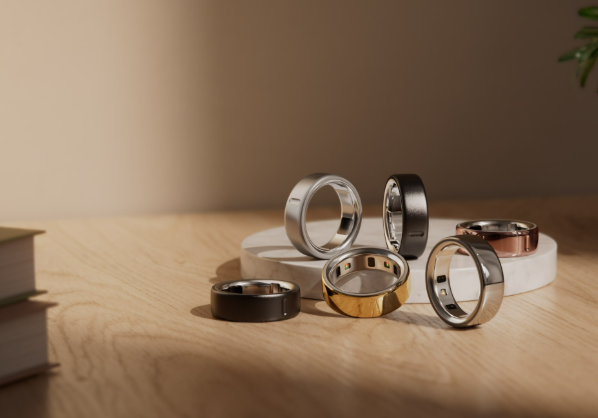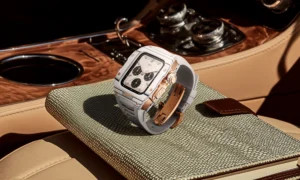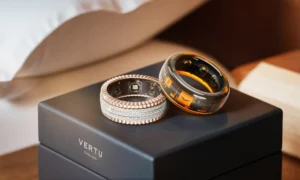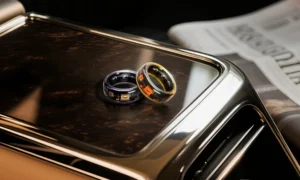
In the burgeoning market of health wearables, the Oura Ring has carved out a unique niche, moving beyond simple step counting to offer deep, data-driven insights into your body's recovery, sleep, and overall well-being. But with so much data at your fingertips, a critical question arises: how accurate is it, and what do health experts and scientific studies actually say about its benefits? This comprehensive guide explores the science behind the Oura Ring to give you a clear, evidence-based understanding of its capabilities.
What is the Oura Ring and How Does It Work?
The Oura Ring is a smart ring crafted from durable titanium that you wear on your finger, designed for continuous 24/7 tracking. Unlike wrist-worn devices, the ring's placement on the finger is a key advantage. The arteries in your finger provide a stronger and more accurate pulse signal than the capillaries on your wrist. The ring uses advanced sensors to measure key physiological signals:
-
Infrared Photoplethysmography (PPG): Green and infrared LEDs measure heart rate, heart rate variability (HRV), and respiration.
-
Negative Temperature Coefficient (NTC) Sensor: This research-grade sensor tracks your body temperature trends by measuring skin temperature every minute, detecting changes as small as 0.13°C.
-
3D Accelerometer: Monitors your daily movement and activity.
This combination of sensors provides a holistic view of your health, summarized in three daily scores: Sleep, Readiness, and Activity.
How Accurate is the Oura Ring for Sleep Tracking?
Sleep tracking is where the Oura Ring truly excels and has garnered significant praise from the scientific community. The gold standard for measuring sleep in a clinical setting is polysomnography (PSG), which involves a complex lab setup. Multiple independent studies have validated Oura's sleep algorithm against this standard.
A 2024 study published in a peer-reviewed journal compared the Oura Ring Gen3, Fitbit Sense 2, and Apple Watch Series 8 to PSG. The findings revealed that for detecting sleep versus wake, all devices had a high sensitivity of over 95%. However, when it came to estimating the time spent in different sleep stages (light, deep, REM), the Oura Ring's estimates were not significantly different from the gold-standard PSG measurements. The same study found that other devices tended to overestimate or underestimate certain sleep stages. Another study by researchers at Brigham and Women's Hospital found Oura achieved 79% agreement with PSG in four-stage sleep classification, which is remarkably high considering human technicians scoring the same PSG data only agree about 83% of the time.
What Do Experts Say About Its Heart Rate and HRV Accuracy?
For health experts, Resting Heart Rate (RHR) and Heart Rate Variability (HRV) are critical indicators of recovery and nervous system balance. The Oura Ring's accuracy in these areas is a primary benefit.
-
Resting Heart Rate: Studies have shown that the Oura Ring has a 99.9% reliability for RHR when compared to a medical-grade electrocardiogram (ECG).
-
Heart Rate Variability (HRV): The ring demonstrates 98.4% reliability for HRV compared to an ECG.
An independent peer-reviewed study published by The Physiological Society found that the Oura Ring showed the strongest agreement for both HRV and RHR measurements when compared to devices from Whoop, Garmin, and Polar. Experts note that this high accuracy is largely due to capturing data during the night when your body is at rest, minimizing motion-related errors that can affect daytime readings on all wearables.
The Game-Changer: Clinically Validated Body Temperature Tracking
Perhaps the most significant differentiator for the Oura Ring is its highly sensitive temperature sensor. While many wearables track temperature, Oura's precision has been validated in several peer-reviewed studies for powerful real-world applications.
One of the most notable uses is in menstrual cycle tracking. A pilot study showed that Oura's continuous skin temperature data can successfully capture the bi-phasic temperature pattern of the menstrual cycle, detecting temperature increases around ovulation and decreases nearing menstruation. This data has been shown to be a powerful tool for understanding and predicting cycle phases.
Furthermore, research from the University of California, San Francisco (UCSF) demonstrated the ring's potential for early illness detection. The “TemPredict Study” found that by tracking deviations from a user's baseline temperature, the device could help identify the onset of fevers, a key symptom of illnesses like COVID-19, often before the user subjectively felt sick.
Oura Ring vs. Competitors: An Expert-Informed Comparison
| Feature | Oura Ring Gen3/4 | Apple Watch Ultra 2 | Whoop 4.0 |
| Form Factor | Discreet Ring | Smartwatch | Wrist/Bicep Band |
| Key Strength | Holistic Wellness & Sleep Tracking: Unobtrusive design for 24/7 wear, best-in-class sleep and temperature data. | All-in-One Smartwatch: Fitness tracking, ECG, notifications, and broad app ecosystem. | Athletic Performance & Recovery: Hyper-focused on strain, recovery, and coaching for athletes. |
| Sleep Tracking Accuracy | Excellent: Validated against PSG as one of the most accurate consumer devices. | Good: Provides solid data but can be less detailed and accurate in sleep staging than Oura. | Good: Focuses on sleep performance and consistency, but less validated on sleep staging accuracy. |
| HRV/RHR Accuracy | Excellent: 98-99% reliability compared to ECG, especially for overnight measurements. | Good: Sporadic measurements can make trend analysis difficult without specific settings enabled.[ | Good: Central to its recovery score, but algorithms differ from other devices. |
| Battery Life | 4-7 days | 2-3 days | 4-5 days |
Frequently Asked Questions (FAQ)
1. Can the Oura Ring diagnose medical conditions?
No. Health experts are clear that the Oura Ring is a wellness device, not a medical device. It is not intended to diagnose, treat, or cure any disease. The data it provides can offer valuable insights into your well-being and empower you to have more informed conversations with your doctor, but it should not be used for self-diagnosis.
2. How does the Oura Ring handle workout tracking?
While the Oura Ring automatically detects many activities and can track workout heart rate, it is not primarily a fitness tracker. Experts note that for real-time heart rate monitoring during intense exercise, wrist-based devices like an Apple Watch or Garmin can sometimes be more accurate due to the ring's potential to shift during gripping exercises. Oura's strength lies in measuring the impact of that workout on your body's recovery.
3. Is the Oura Ring worth it without the subscription?
To get the full benefit and access the deep analytics, trends, and personalized insights that make the device powerful, the monthly subscription is essential. Without it, you can only see your three daily scores and basic information, losing access to the rich data that experts find most valuable.
Recommended Audience
The Oura Ring is particularly beneficial for:
-
Health-Conscious Individuals: Anyone who wants to understand their body better and optimize their sleep, recovery, and daily habits based on objective data.
-
Athletes and Fitness Enthusiasts: Those focused on optimizing recovery and preventing overtraining by tracking how their bodies respond to workouts.
-
Biohackers and Data-Driven Users: Individuals who love digging into personal data to identify trends and make lifestyle adjustments.
-
Women's Health: Individuals seeking a scientifically validated tool to track their menstrual cycle through continuous temperature monitoring.






